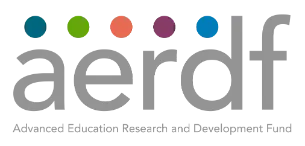
R&D Projects
Reading Reimagined partners with teams of researchers, developers, and educators to understand the most powerful ways to advance foundational literacy skills with Black and Latino students, Native American students, and all learners in grades 3-8 experiencing poverty.

R&D Projects
These R&D teams have strong theoretical and empirical grounds for making rapid improvements with learners in word recognition and fluency. Each team believes in and focuses on the linguistic assets and strengths of our students in the teaching of foundational literacy skills.
The following projects have been developed in deep partnership with educators who specialize in working with Black and Latino students, Native American students, and all learners experiencing poverty using Advanced Inclusive R&D processes.
Research Study for Increasing Fluency in Middle School Students
Northwest Evaluation Association (NWEA)
The objective of this project is to improve fluency outcomes for historically marginalized middle school students who struggle to read. The intervention consists of an easily administered protocol with simple instruction that does not require expertise in teaching foundational skills, while making the student a partner in the work. Their hypothesis is that the effective intervention strategy of Repeated Reading can be improved by directly targeting student disenfranchisement and teacher capacity while supporting underlying reading skills.
STELLAR: Statistical (learning) and Translanguaging in Education: Leveraging Language Assets for Reading
University of California, Irvine
Project STELLAR is developing and evaluating a research-informed approach to teaching reading to African American English (AAE)-speaking children that integrates, honors and affirms their cultural-linguistic assets, improves their reading fluency, and by implication comprehension of text. This is based on several theories of learning suggesting promising directions for leveraging children’s home and community language assets to help them learn to read.
Read STOP Write: Development of a Multicomponent Intervention in Grades 4-5
State University of New York at Buffalo
The purpose of the Read STOP Write project is to develop, implement, refine, and evaluate the effects of a multicomponent intervention to improve fourth and fifth grade students’ foundational reading skills (word recognition, morphology, and fluency), reading comprehension, writing, and motivation for reading informational text. Instead of waiting for children to demonstrate mastery of foundational skills before introducing complex, informational texts, the Read STOP Write project will apply an innovative approach: providing children with the built-in supports they need to succeed during reading and writing of science and social studies texts.
BIG WORDS: Building Words + Making Meanings for grades 3-5
University of Tennessee, Knoxville
Development, testing, and refinement of an instructional intervention to support students’ decoding, encoding, sentence production, fluency, and their confidence to read using small and whole group instructional practices. Small group instruction for decoding and encoding strategies addresses morphology and structural analysis of multisyllabic words with a goal of flexible application of syllabification practices.
Rapid Online Assessment of Reading (ROAR) for K-12
Stanford University
ROAR consists of a suite of measures that have been validated K-12 in over 20,000 students across 16 states; each measure is delivered through the web browser and does not require a test administrator. ROAR rapidly provides precise indices of reading ability with greater precision than many standardized, individually-administered reading assessments. Powered by the Rapid Online Assessment Dashboard (ROAD), ROAR integrates with most rostering systems including Clever and ClassLink so can be deployed to a whole district with a click of a button and provides instructionally informative score reports to teachers in real time as students complete the assessments.
